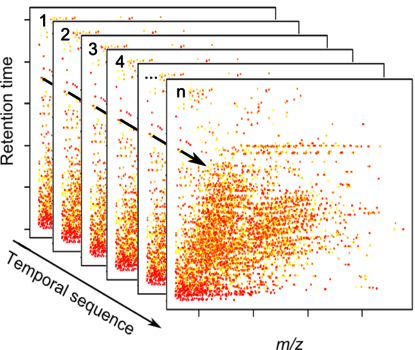Department Environmental Chemistry
Mining of high-resolution mass spectrometry data to monitor organic pollutant dynamics in aquatic systems
The screening of aquatic systems for known and unknown polar and semi-polar organic micropollutants relies heavily on analytical chemistry, foremost high-resolution mass spectrometry (HRMS) coupled to liquid chromatography (LC). LC-HRMS offers high sensitivity, selectivity and speed in detecting micropollutants over large batches of samples, even without prior knowledge of the number and structure of potential micropollutants. However, quantifying variation in micropollutant loads over time requires a concise comparison of a multitude of such HRMS data sets. Thus, efficient screening of known and unknown organic pollutants presupposes fast, highly automatized and reliable data mining strategies.
Underlying algorithms can already group different LC-HRMS-signals resulting from the very same pollutant or from different pollutants of a homologous series. In addition, algorithms and automatized workflows can simulate the LC-HRMS signals of known micropollutants and subsequently screen them in a multitude of LC-HRMS data sets, after thorough preprocessing of the data (check the freely available software at our department webpage). Further research is directed towards implementing computational strategies for automatically detecting common patterns in the occurrence of micropollutants in aquatic environments and thus elucidating their emission pathways. Such strategies shall be based on the time series analysis of aggregated LC-HRMS data, taking governing hydrological processes into account.
The international monitoring station at Weil am Rhein offers opportunity to evaluate our strategies for one of the most important river systems in Europe.


